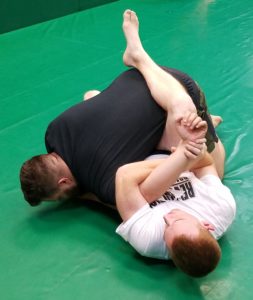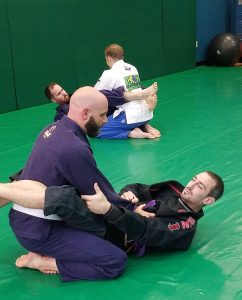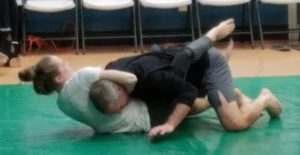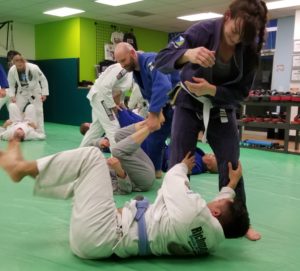What Should I Drill?
By: Daniel Frank

The art of drilling in jiu jitsu can be a very difficult thing for a jiu jitsu practitioner to master. Not only do you have to determine what needs to be improved in your game, you also have to determine what parts need to be improved most, the practicality of drilling those portions, the time frame and amount to be drilled, and the speed at which to drill your techniques. Add to that, the fact that you also have to strive to be an excellent drilling partner. Indeed, becoming a black belt in drilling can be quite a task.
The first thing to determine is what needs to be drilled. Are you good at passing the guard, but your own guard gets passed at will? Maybe you need to work on your weaknesses. It is a great feeling to have a go-to technique that you believe is unstoppable. It is also very easy to practice and drill that move because there is very little thinking or physical consternation involved. If you can do the technique in your sleep, then why are you bothering to drill it? By drilling your weaknesses you lift your overall game. It is difficult to work on something that your mind and body are not accustomed to. That, however, is what separates the best from the rest.
Practicality will also play a major role in your drilling. Do you love the flying arm bar? How many times do you believe you can land on your head before you sustain serious damage? Has your partner never seen a berimbolo before? How do you think he or she will react when you knock them to the mat and spin upside-down beneath them? Knowing your partners, and their limits, will help you in determining the best route of drilling. This also applies to you. If you struggle to set up a common push/pull triangle, then why are you trying to drill the reverse inverted triangle from a side control escape? Be practical and knowledgeable and you will reap the benefits. Know your limitations, and your partners, to optimize your drilling time.
Knowing how much time you have to drill your techniques, how many opportunities you have to drill that technique, and how many days in the week you are available to drill will determine how many repetitions you can get in and also how quickly you will progress. I typically pick one technique to work on for a whole month, let’s say the X-pass. I have three 30-minute classes per week to work on that pass. In each class I have three 4-minute sessions to practice that technique. When I am fresh, I can do 70 repetitions in four minutes. I can get 60 repetitions in the second time and another 50 in the last four minutes. That is 180 repetitions each class or 540 repetitions each week. That comes out to be close to 2,200 repetitions each month on one move. If you can find it in your schedule to make each drilling class and focus on one move each month, then rest assured that by the end of the year you will have twelve solid moves added to your arsenal.
The final item to be addressed in your drilling is the speed at which you drill and which portions of the technique you should focus on. I enjoy practicing the whole technique, from set up to conclusion, but vary my speeds when drilling it. For a technique like the X-pass I may move quickly through setting up my grips and moving into position while I take a slower approach with my footwork and my pressure midway through the pass. This method can be applied through most techniques. Move slower and more methodical through the most difficult portions of a technique while speeding through the portions that have already become second nature to you through practice.
 Now that you have a better understanding of drilling, it is time to put the theory into practice. Plan out your schedule for which techniques to drill, the days on which you will drill those techniques, and record your work and effort. Through hard work and perseverance anything can be attained.
Now that you have a better understanding of drilling, it is time to put the theory into practice. Plan out your schedule for which techniques to drill, the days on which you will drill those techniques, and record your work and effort. Through hard work and perseverance anything can be attained.